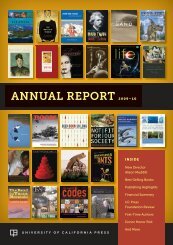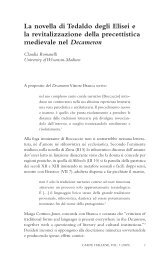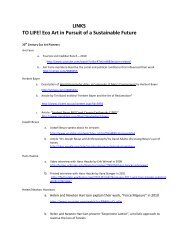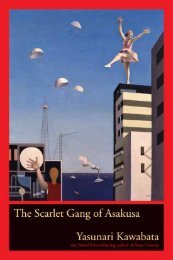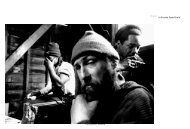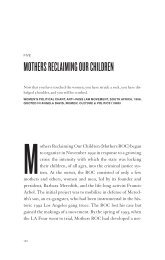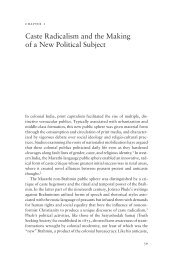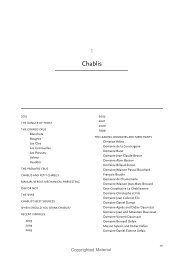Read Chapter 1 (PDF) - University of California Press
Read Chapter 1 (PDF) - University of California Press
Read Chapter 1 (PDF) - University of California Press
You also want an ePaper? Increase the reach of your titles
YUMPU automatically turns print PDFs into web optimized ePapers that Google loves.
east harlem 17<br />
in 1994 reduced the standard <strong>of</strong> living in the Francophone nations by<br />
50 percent almost overnight, forcing pr<strong>of</strong>essional traders to liquidate<br />
inventory and set <strong>of</strong>f for more lucrative markets. The West African population<br />
in New York doubled between 1990 and 1996, and though they<br />
are still far fewer in number than other immigrant groups, West Africans<br />
have become a visible presence as vendors on the streets <strong>of</strong> the city. 12<br />
Like Italians at the turn <strong>of</strong> the twentieth century, many West Africans at<br />
the turn <strong>of</strong> this century are transient tradesmen, spending three to six<br />
months in the United States before returning for a similar period in<br />
Africa. Unlike the Italians and most other groups, West Africans have<br />
not established a concentrated urban settlement but rather follow a dispersed<br />
pattern <strong>of</strong> residence throughout the metropolitan area. This is a<br />
result in part <strong>of</strong> the diversity <strong>of</strong> West African points <strong>of</strong> origin. Most arrive<br />
from Ghana and Nigeria, but many more are arriving from the Francophone<br />
countries <strong>of</strong> Senegal, Guinea, Mali, and Niger. Though some West<br />
Africans have taken up residence in East Harlem, most commute to their<br />
businesses on Third Avenue from Central Harlem, Queens, or New Jersey.<br />
Mohamed’s story reflects the lives <strong>of</strong> West African commuters and settlers,<br />
probing their connections to the community and their hopes for the<br />
future. For many, Third Avenue is one great pedestrian mall, worth the<br />
commute after being pushed <strong>of</strong>f 125th Street by the city and by African<br />
American store owners who resented the competition. For others, those<br />
who have moved from the folding table to the storefront, East Harlem is<br />
home, the crucible <strong>of</strong> the American Dream conceived years ago and thousands<br />
<strong>of</strong> miles away.<br />
“Second Avenue: The Chinese” presents Si Zhi’s story. Si Zhi is thin<br />
and wiry, with a generous smile. His thick Shanghai accent obscures his<br />
English only half as much as he thinks it does, but then he is a perfectionist.<br />
Si Zhi built ships as a civil engineer in Shanghai, and he brought<br />
his precision and attention to detail, along with his wife and daughter,<br />
with him when he arrived in New York a dozen years ago. But the language<br />
barrier precluded a career in engineering, or even unionized construction,<br />
and he found work cleaning out dirty ashtrays in the sleek<br />
lobby <strong>of</strong> a Times Square hotel. As with many <strong>of</strong> his compatriots, his first<br />
apartment was in an overcrowded tenement building near Chinatown.



